User-Centered Design
The User-Centered Design course focuses on creating design solutions that meet user needs through continuous user involvement in all phases of the design process. The course covered key topics such as usability, user experience, human-computer interaction (HCI), and ethical principles in design. It provided insights into various user research methods and introduced approaches for gathering user data to inform design decisions. The course emphasized empathizing with users, incorporating ethical standards, and ensuring data-driven decisions to improve the user experience of interactive products and systems.
Key Learnings:
- Human-Computer Interaction: Understanding how people interact with systems and designing accordingly to enhance usability and experience.
- Data Gathering and User Research: Applying interviews, persona creation, and affinity diagrams to guide the design process.
- Ethics in Design: Ensuring the ethical collection of user data, including informed consent and minimizing harm during research.
Assignment Summaries
Assignment 1: Usability & User Experience of TU/e Website
We analyzed the TU/e website for its usability and user experience. Our group identified issues with the website’s navigation and search functionality, offering suggestions for improvement. We assessed the first-time user experience and proposed a chatbot system to enhance usability. Our key focus was reducing cognitive overload and improving the website’s personalization for students.

Assignment 2: Input and Output Interfaces for Hill Climb Racing
This task involved redesigning a smartphone game, Hill Climb Racing, for two alternative interfaces. The first interface, Touch Trackies, transformed the game into a tactile experience for users with visual impairments. The second, Shadow Racer, utilized shadow-based input for players with limited fine motor skills. Both designs emphasized inclusivity and accessibility.
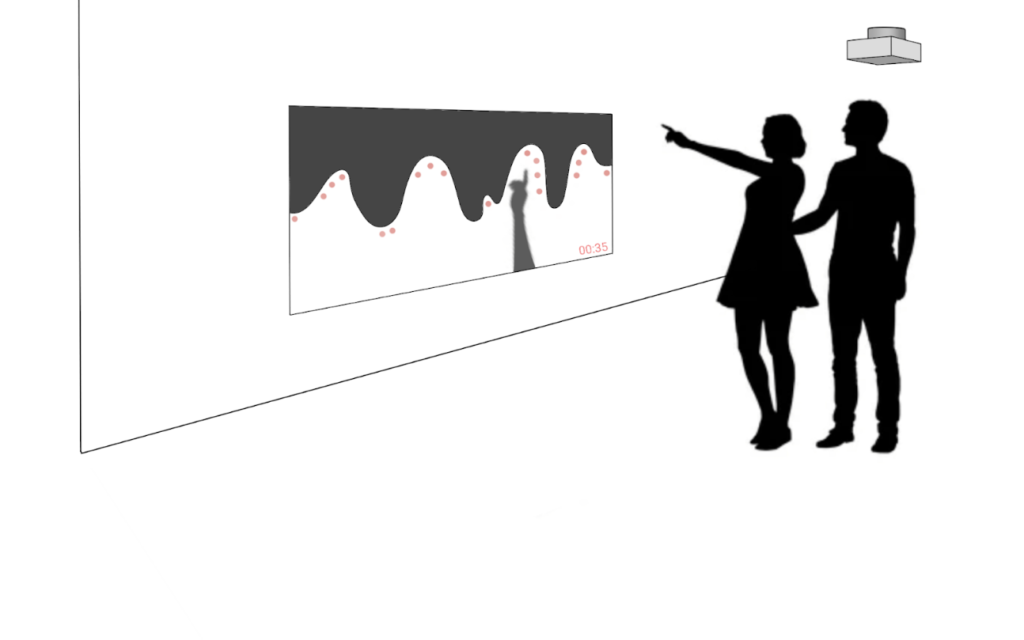
Assignment 3: Hierarchical Task Analysis (HTA) & KLM Analysis of Cash Machines
We conducted an HTA and KLM analysis on cash machine interactions. Our focus was optimizing user flows for withdrawing cash, simplifying tasks to reduce memory load, and designing an interface that minimizes distractions, such as notifications, during transactions.
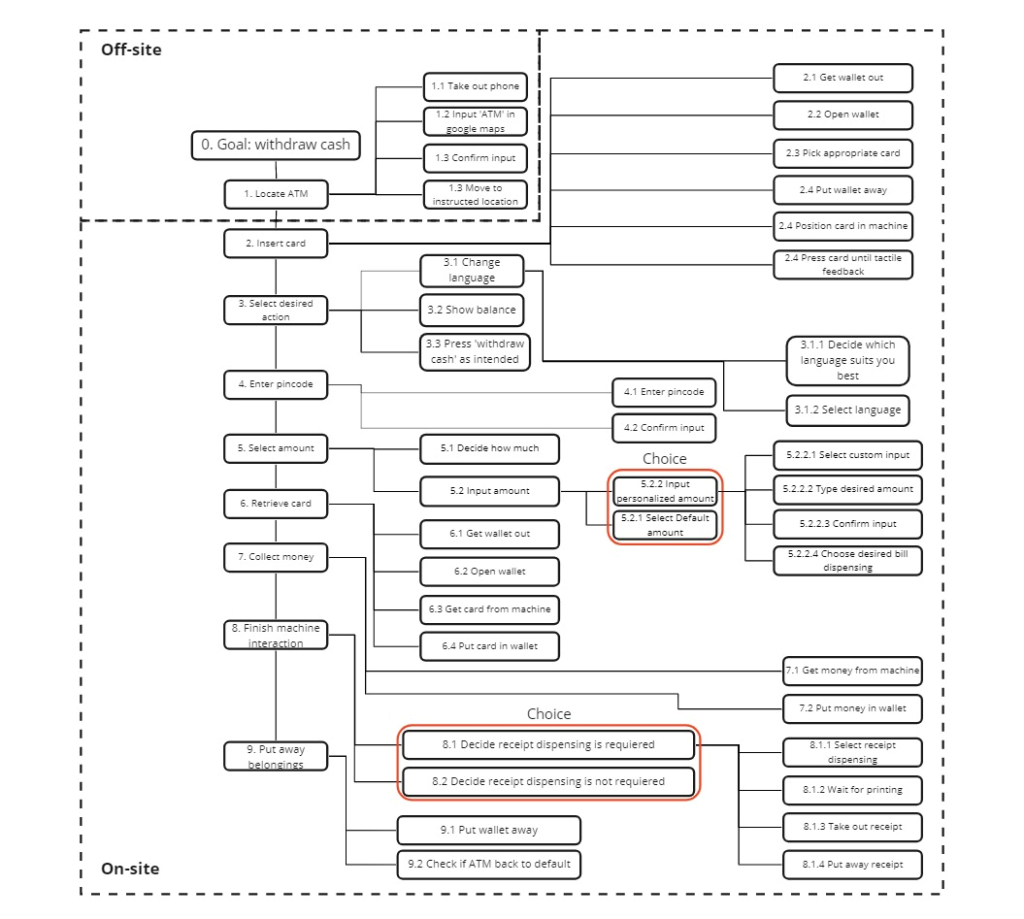
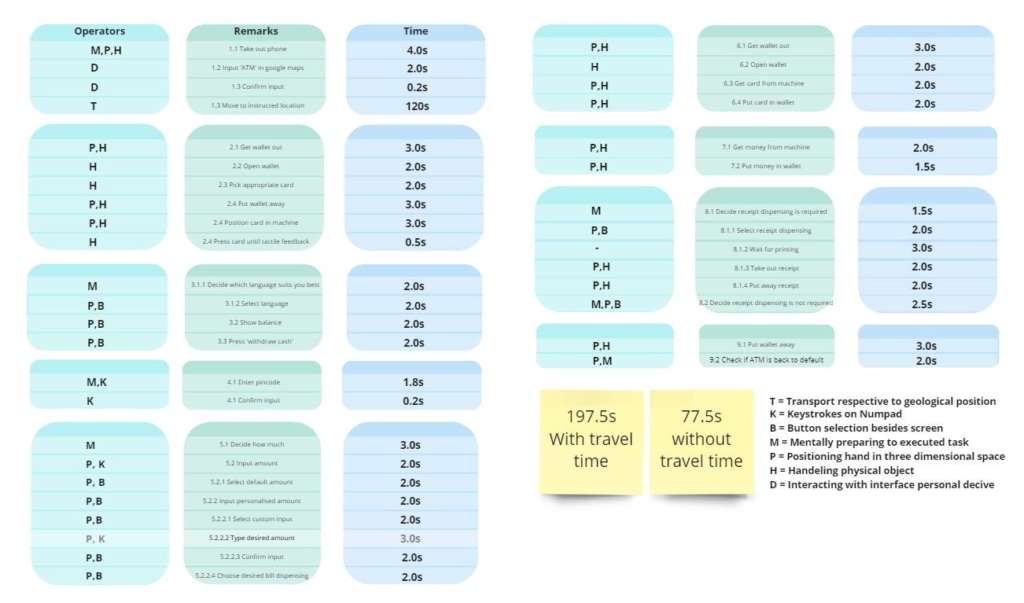
Assignment 4: Ethics in User Research
We analyzed a case study using an Ethical Research Checklist to identify problematic areas related to user involvement in research. Our group highlighted ethical concerns like unhealthy dietary advice, invasive recruitment methods, and deceptive machine learning simulations. We proposed study redesigns to minimize harm and ensure informed consent.
Assignment 5: Personas and Data Analysis
We developed personas, such as Regina Hudson, a 25-year-old designer seeking social connections. Using data gathered through research, we defined user goals, motivations, and behaviors. This step informed our concept development for future assignments.


Assignment 6: Conceptual Model & Storyboard for Match & Dine
We created the Match & Dine app, designed to connect people over shared dining experiences. Drawing inspiration from apps like Tinder, users swipe to match with others based on common interests and dietary preferences. Our storyboard illustrated the user journey of Regina, from setting up her profile to enjoying a dinner date, highlighting user interactions and emotional touchpoints.

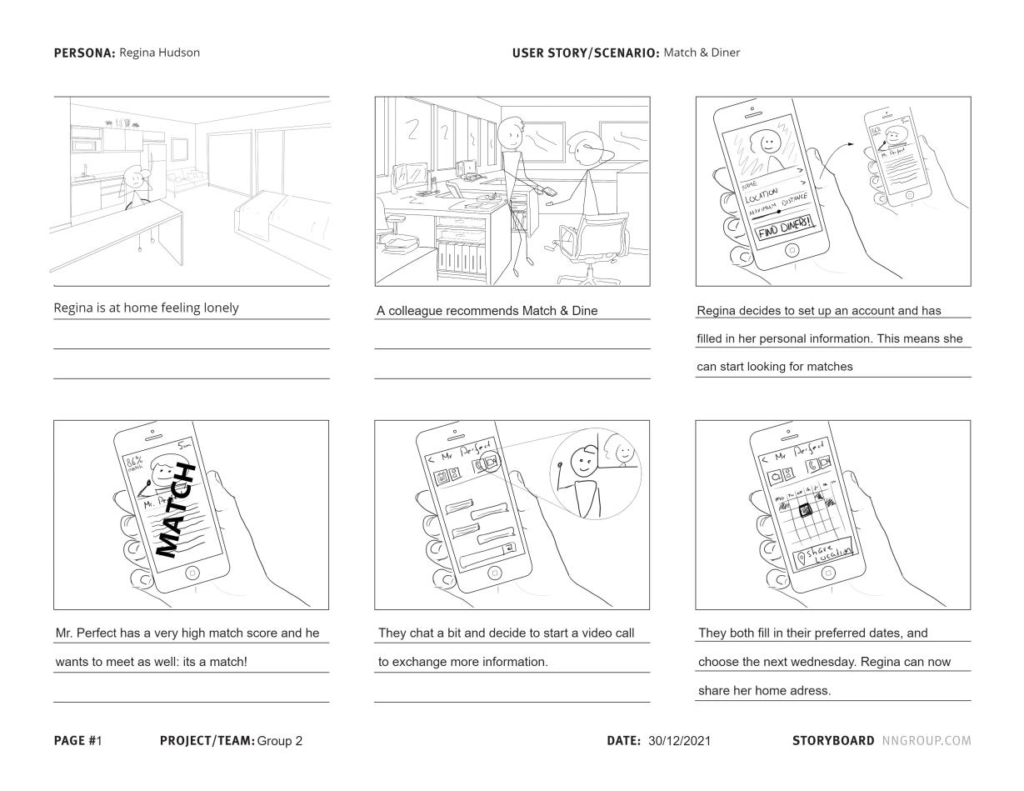
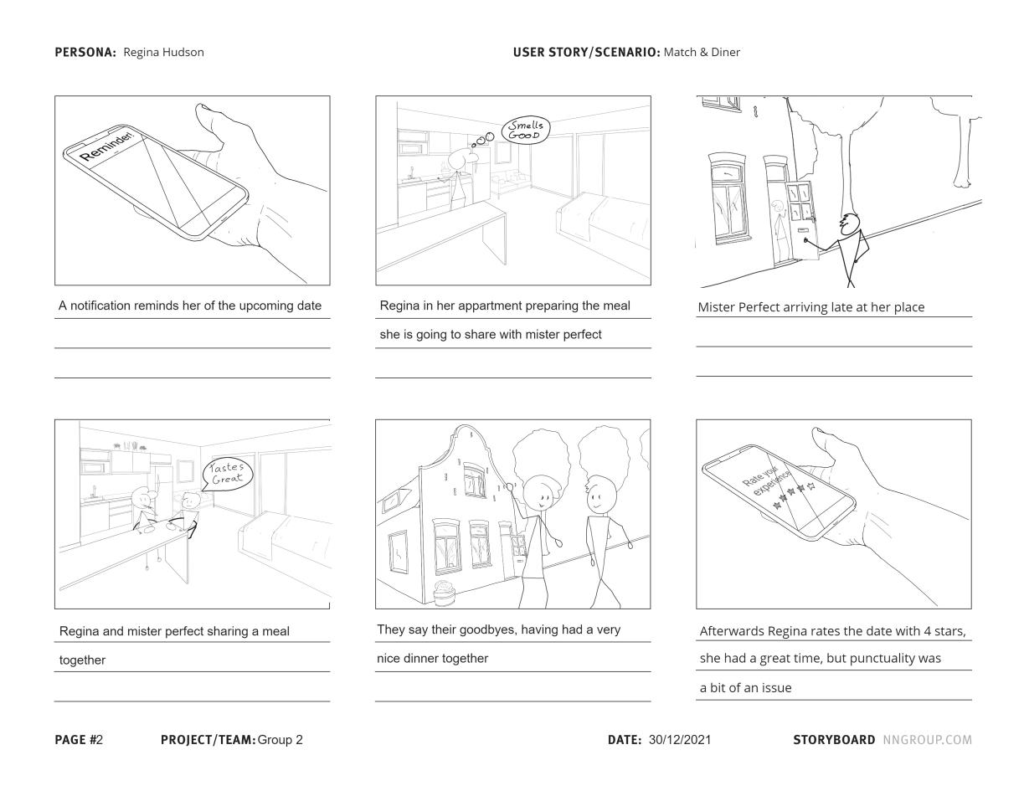
Assignment 7: Affinity Diagram
Our affinity diagram captured the group’s ideas on safety, social verification, and criteria for matching in the Match & Dine app. This step helped us prioritize features like chat functions, video verification, and shared hobbies, ensuring the app catered to users’ safety and social needs.
